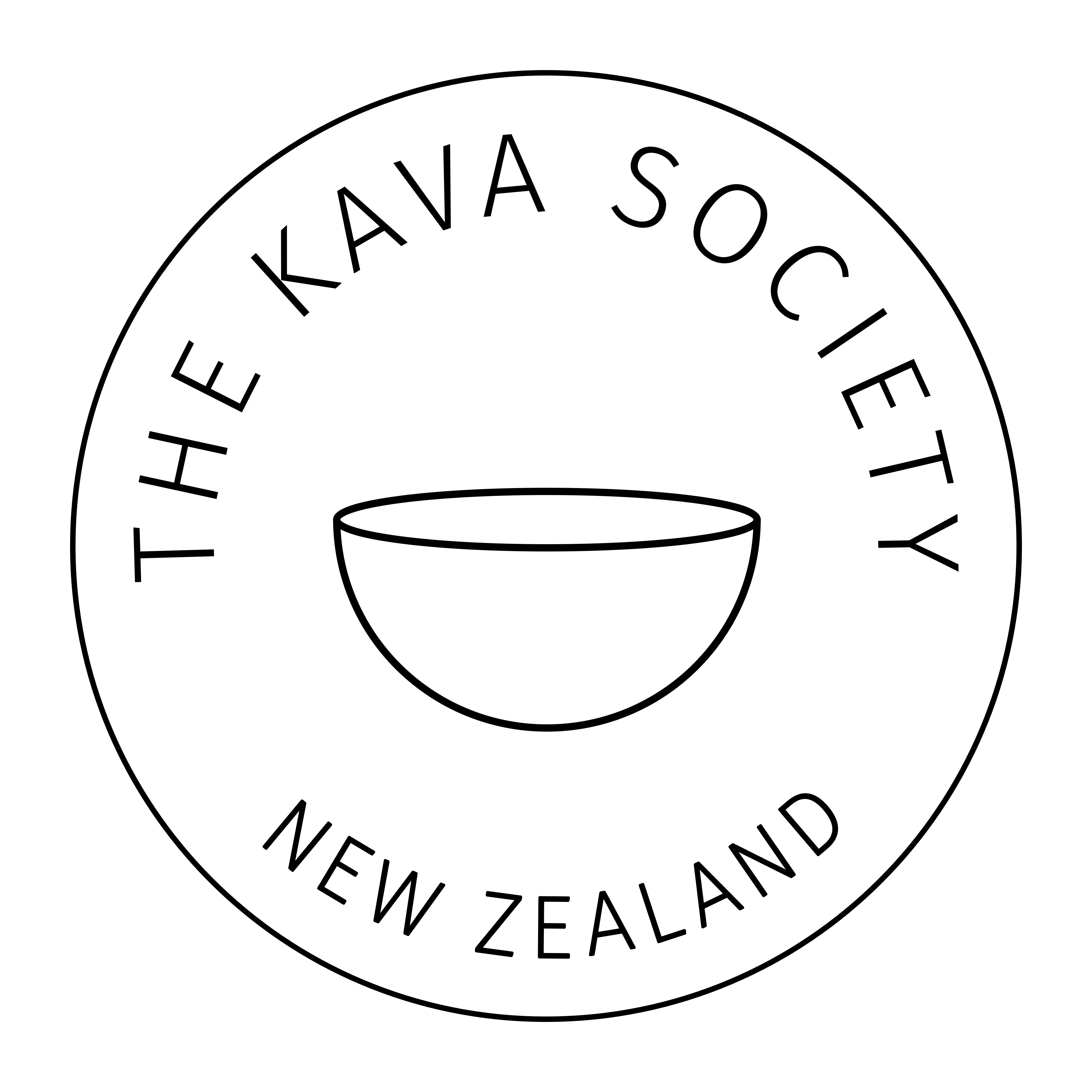Article: Nakamal Diaries
Nakamal Diaries
According to some of the most respected kava scientisits and popular knowledge kava was first domesticated thousands of years ago on the islands of what we know today as The Republic of Vanuatu. Not surprisingly, Vanuatu until today boasts one of the most vibrant kava cultures in the world. The islands of Vanuatu are known not only for a great variety of different kava strains, but also for their famous kava rituals and practices. Vanuatu is also known as practically the only place in the South Pacific where kava is made from fresh (i.e. not dried) roots. As such, it has both a unique flavour and incredible potency. In late December some of us decided to travel there to learn more about the local kava scene and talk to some of the local kava drinkers, farmers and vendors. Below we publish a few of the key observations we made in between shells of fresh kava.
1. Nakamals
Chiefs' Nakamal in Port Vila
Nakamals, or kava bars are the Port Vila equivalents of a mixture of a British pub with a public fountain. Some people visit them to drink kava on site (either alone or with a group of friends), others bring empty plastic bottles (known here as "plastiks") to get "take away" kava home. There are hundreds of these establishments in and around Port Vila and it really doesn't take much to start one. Most of the nakamals are very simple wooden structures with some sitting space, a "bar" with a large bucket (or a large metal pot in one of the more "sophisticated" places) and a selection of simple snacks (mainly fruits, but also some veggies or even fried meat). Some nakamals have toilets and running water, but most are very, very simple and can hardly be considered hygienic. Nakamals often look like some shacks or slums and the only thing that distinguishes them from local slums or piles of rubbish is a single lamp or light bulb that shines at their entrance.
Most local people have their favourite nakamals and know which ones to avoid. There isn't much consistency in these recommendations and warnings. One person's favourite nakamal can be another person's most hated place. It is therefore good to try a few of these places before commiting to one. At the same time, I would advise against too much "nakamal crawling" as this can ruin the kava experience as one needs to walk, take buses, look at a map, etc. It's good to try a few nakamals to know the difference, but once you are happy with one or two, try to spend an entire evening there as this way you will be able to relax and fully enjoy the ambiance. My favourite place was Shefa nakamal as it not only had nice kava (except for the last night when they served left overs - more on this issue below), toilets, good snacks, but also because it was located on the top of a hill overlooking the port vila bay. The views were great and the breeze meant that there weren't that many mozzies there.
There are a few more famous nakamals. One such place is called the chiefs nakamal. As it is located right in front of the local parliament, it is often frequented by local politicians and power brokers. It is also a good place to try different kavas as it has a few little stalls selling kavas from different provinces (islands).
2. Drinking Fresh Kava
Practically all nakamals in Vila serve fresh kava. Local people seem to consider the idea of drinking dried powder strange. At best they could consider it a "necessary evil". As many people here have observed, drinking fresh kava is a rather different experience to drinking dried root. For a start, it really does taste different. It is difficult to describe it, but the flavour is certainly more complex and deeper. It tastes a bit like some earthy, bitter (but with some sweet-sour notes) vegetable juice/smoothie. To be clear, it does not taste great and nobody drinks it for the taste, but it is easier to drink than most dried powders. Especially when one considers the fact that for a shell of kava made from dried powder to have the fresh, nakamal-grade kava potency it would have to be unacceptably thick. Fresh kava in Port Vila is certainly stronger per ml than any drinkable shell of kava made from medium grind dried root. From our experience only the instant and micronized kavas products offered by our little kava shop can compete with fresh when it comes to potency at acceptable water to powder ratios. They are also the closest on earth to drinking fresh kava in Port Vila when it comes to taste and smoothness. Is is surprising as most of our kavas come are not from Vanuatu, but we guess it's another proof of how pure and well-processed his products are.
In any case, a solid shell (regular shell $1, large one $1.5) of good, fresh kava in Port Vila is an incredible experience, especially for a kava aficionado. Just one such shell can melt one's mind and muscles without too much of a bad aftertaste. We can still remember our first fresh shells. We took them to the edge of a cliff overlooking the bay. We drank it quickly and sat down. Our whole mouths and throats were numb, a few minutes later our bodies relaxed and our minds were as clear as the sky above port vila. It felt great.
Unfortunately, due to the local climate and the lack of any kind of hygienic standards in the nakamals, it often happens that local nakamals serve kava that leaves a lot to be desired not because of the quality of the root but because of their mishandling of the production/storage process. In such hot climate, it doesn't take long before fresh kava turns into a very acidic and sour mixture. Many nakamals still serve their "left over" kavas from the previous night or they mix it with the new batches. The end result is a potent, but difficult to drink beverage that can cause stomach upset.
3. Cultivars, regions, etc..
Most people we spoke with identify kava simply by its place of origin. Everybody has his or her favourite region, but it is the place, not the name of a particular cultivar that seems to matter to most of the kava drinkers we've met. Some people like kava from Tanna "because it doesn't make you tired the next day". Others like kavas from Pentecost because "they help you to go to sleep and are very strong". Others like kava from Northern Malekula "because it's mild [a relative term in Port Vila, I must say] and has a very smooth taste], etc. While people are familiar with the names of cultivars, they tend to speak about the regions, locations more than about the cultivars. Not a single person I met knew anything about chemotypes, kavalactones ,etc. Their knowledge is based on their own experience. Apparently, different parts of Vanuatu specialize in different kind of kava/cultivars. People know that kava from x island will give them x kind of effects while kava from y island will give them y effects. It's quite amazing. Fortunately, these days we can use kava science to help us determine the differences between various kavas.
4. Tudei
While nobody we talked to with knew anything about kava chemotypes everybody seemed to be aware of the tudei kava issue we didn't meet a single person that would have anything good to say about tudei kava. All the people we talked to told us that they either never drink it or had only tried a couple of times. They all thought it had very undesirable side-effects ("hangover", "headache", "feeling tired the next day", "feeling sick"). One guy told us that in his village it was only consumed by women undergoing some special, very painful ritual (I think he referred to getting some special marks on their skin or something like that) and in that case only tudei was strong enough to ease their pain and to sedate them enough to put them to sleep. One other guy told us he had consumed tudei when there was no other kava available, but he made sure he used twice as much water as with "normal" kava. Nobody seemed to be aware of any negative health effects of tudei (not to mention other types of kava), they all simply hated its taste and effects.



Leave a comment
This site is protected by hCaptcha and the hCaptcha Privacy Policy and Terms of Service apply.